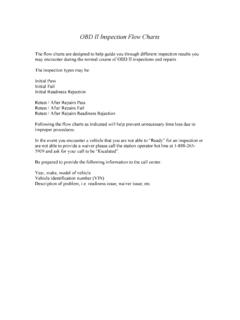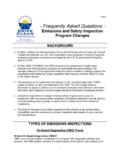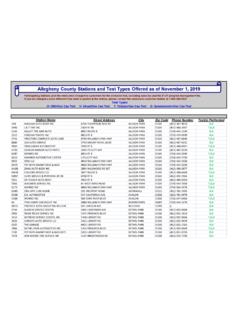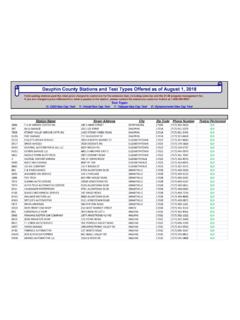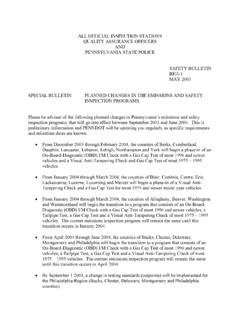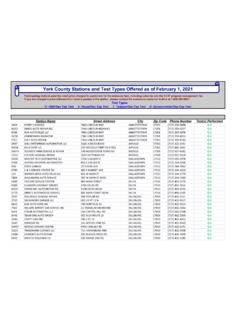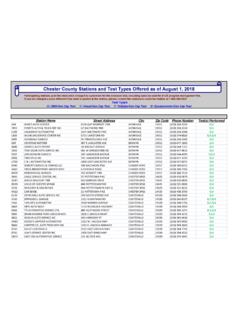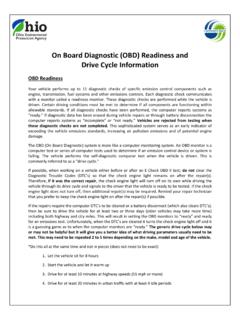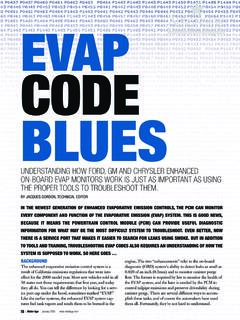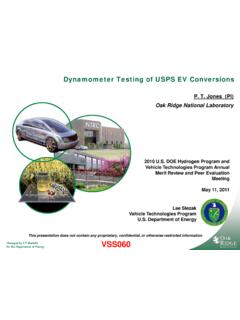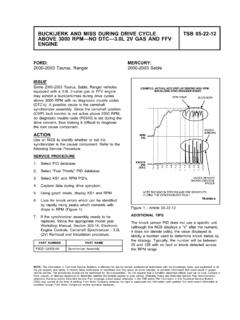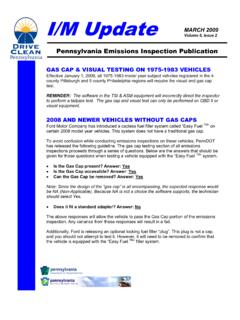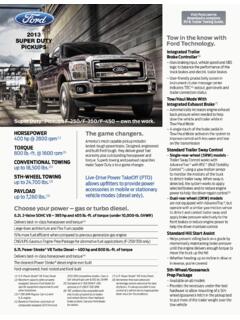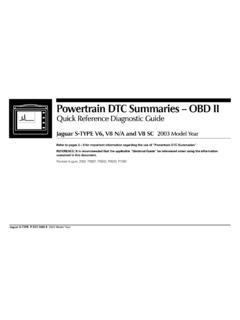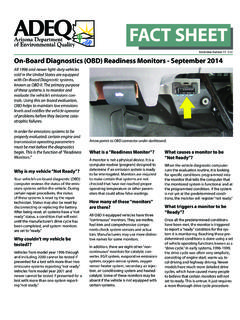Transcription of OBD I/M Check Fact Sheet - PA DEP I/M - Welcome to Drive ...
1 OBD I/M Check fact Sheet What is On-Board Diagnostics (OBD) The OBD system is a computer equipped on most model year 1996 and newer vehicles. The system is comprised of a computer with diagnostic software and sensors. The OBD system monitors the performance of the ignition, fuel metering and emissions systems, including the sensors and the computer itself, while the vehicle is being driven to ensure they are working as designed. The on-board computer has the ability to identify a problem well before the driver may recognize symptoms. The computer will illuminate a light on the dash to notify the driver of a problem. Most dash lights will display a Check Engine, Service Engine Soon, or an engine symbol. When the OBD system detects a problem, a diagnostic trouble code is stored in the vehicle s computer. When a vehicle is brought in for an official OBD I/M Check , those trouble codes will help a technician properly diagnose and, if necessary, repair the problem.
2 The OBD I/M Check can be performed on most 1996 and newer model-year gasoline-powered passenger vehicles, vans and light-duty trucks weighing 8,500 pounds and less, since these vehicles were required by the EPA to be manufactured with OBD systems. Additionally, if your vehicle s Check engine light is not illuminated, this doesn t mean that your vehicle will pass. This could occur for several reasons; an example could be that the Check engine light bulb is not functioning. The OBD I/M Check During the OBD I/M Check , a certified technician will attach a cable to the vehicle s on-board computer through a data link connector (DLC), usually found under the dashboard, and download information to a computer to assess how well the vehicle s emissions system is functioning. The vehicle s on-board computer will generate diagnostic trouble codes (DTC s) if there are malfunctions or other problems present in the vehicle s emissions system.
3 Readiness Monitors A vehicle s OBD system has up to 12 monitors within the OBD computer. These monitors are designed to Check the running condition of all key emissions components of the engine. Three monitors run all the time when the engine is running, the remaining monitors run intermittently during normal driving. These monitors report to the OBD computer if the engine s emission performance is, or is not, in compliance with federal EPA regulations. These monitors also report to the On-board computer as being ready or not ready . If they are not ready, they are not yet in a condition to determine if the associated emissions systems are working correctly. When a vehicle is taken to an emissions inspection station to receive the OBD I/M Check , the first thing the testing equipment does is Check these monitors. For model year vehicles 1996-2000, a vehicle with two monitors that are not ready will be accepted for the OBD test and the test can continue; for model year vehicles 2001 and newer, only one not ready monitor will be accepted for testing and the test can continue.
4 Any vehicle that has more than the allowable number of not ready monitors will be rejected from testing until the monitors have been set to ready which may be accomplished by performing a Drive cycle specific to the vehicle. -- over-- Drive Cycles If a 1996 or newer vehicle is not ready for testing because too many readiness monitors are not set, the vehicle may be put through a Drive cycle . The Drive cycle is a prescribed driving routine specified by the vehicle manufacturer. There is no generic Drive cycle . Each vehicle has Drive cycles specific to the make and model of the vehicle, therefore, every Drive cycle will be different for every vehicle. If your vehicle is not ready for testing, Check with your service provider or the vehicle manufacturer to determine the correct Drive cycle for the monitor that is not ready for your make and model vehicle.
5 Simply driving the vehicle may not guarantee the monitors will be set to ready. The Check Engine Light When your vehicle s Check engine light illuminates it means that something is wrong. At the very least, you may be using more fuel than you need to. If you have your vehicle serviced when the Check engine light is illuminated, you are taking the right steps towards repairing the problem while contributing to improving Pennsylvania s air quality. Ignoring the Check engine light and continuing to Drive the vehicle may result in more costly repairs down the road. You may have heard that if the Check engine light is illuminated, the way to make a vehicle ready to have the OBD test is to disconnect the battery for a few minutes, then reconnect it to make the Check engine light go out. Nothing could be further from the truth. Whatever you do, DO NOT disconnect the battery!
6 Disconnecting the battery will cancel the OBD systems monitors and make the vehicle not ready for testing. This practice will only add time and expense when you take your vehicle to be tested. If your Check engine light is on and your vehicle is due for inspection, it would be beneficial for you to take your vehicle in for the OBD inspection early in the cycle . If it fails the OBD inspection, this will help assure that there is sufficient time to repair the vehicle and to re-set any needed monitors prior to a reinspection.
